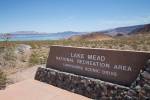PICTURE PERFECT
In case you hadn't heard, Hoover Dam wasn't built to tame the Colorado River or generate electricity. As it turns out, President Herbert Hoover ordered the dam's construction to hide a giant energy cube from outer space that can turn everyday machines into evil, murderous robots.
So goes the plot of the summer blockbuster "Transformers," which is merely the latest motion picture to use Hoover Dam as a backdrop.
The dam entertained its first movie crew in 1934, two years before the structure was even finished. The film is called "The Silver Streak" and features a train racing to the Boulder Dam construction site with medical supplies and no time to spare.
In the decades since, dozens of movies, documentaries, television shows and commercials have been shot on, inside and around the iconic structure 30 miles southeast of downtown Las Vegas.
But long before a director shouts "Action!" at Hoover Dam, the production company must secure a right-of-use permit, a requirement for any commercial photography at facilities managed by the U.S. Bureau of Reclamation.
The process involves something that might surprise you: script approval.
In order to receive a permit, an applicant must supply the bureau with a script, outline or storyboard for the production.
For the record, the permit requirement does not apply to newspaper photographers and television news crews.
"It's a very regulated process," said Bob Walsh, bureau spokesman at Hoover Dam. "We don't want something shot down there that would be inappropriate."
That means no pornography or racist propaganda. It can also mean nothing that might cast the bureau or the dam in a negative light.
As Facility Manager Bill Bruninga put it, "Hoover Dam is a public icon, and we do what we can to protect that image."
Ultimately, dam officials are free to deny filmmakers access to secure areas of the installation for almost any reason at all, though they try not to be capricious about it.
"We try to accommodate as much as we can, but we have the ability to say no in a very objective review of what they want to do," Walsh said. "It's an objective review, not a subjective review."
In other words, officials at the dam try to use federal regulations governing everything from civil rights to decency -- not their own sensibilities -- to guide their decisions.
One story arc sure to get your permit application rejected is an attack or other catastrophic event that damages or destroys the dam.
"We don't want Hoover Dam shown as a danger to the public," Bruninga said.
Obviously, that hasn't always been the case. The 1978 "Superman" movie was filmed at the dam, and it climaxes with a massive earthquake that topples the structure. Alfred Hitchcock's 1942 film "Saboteur" involves a plot to blow up the dam.
Walsh acknowledged the bureau is a bit more conservative than it used to be. Hoover Dam doesn't provide the same level of access it once did to film companies or even documentary makers.
The change came as a result of the Sept. 11, 2001, terrorist attacks.
Edward Harran is production manager for the Nevada Film Office, the state agency that assists productions filming in the Silver State. He said their office used to get "tons and tons" of inquiries about filming at Hoover Dam, but the post-9/11 security restrictions made it harder to get a permit.
Lately, though, things seem to be loosening back up.
"They've become a little more film-friendly again," Harran said.
Dennis McBride, executive director of the Boulder City-Hoover Dam Museum, isn't surprised that so many filmmakers want to use the dam as a backdrop.
"It's one of the most recognizable landmarks in the world," he said. "It's like the Eiffel Tower or the Taj Mahal. It's dramatic in its sweep."
The biggest reasons for rejecting film permits are safety and disruptions to visitors or vehicle traffic. Evaluating such things is usually pretty easy. The hard part for staff members is not laughing in the faces of some applicants.
One film production wanted to shut down the road over the dam -- that's U.S. Highway 93, the main route between Las Vegas and Phoenix -- for an entire week. Another wanted to lower cars into the spillways and race them around.
Walsh said most filmmakers are willing to change their plans to conform to what the bureau will allow. Others simply go shoot somewhere else.
Walsh said he knows of only a couple of applications that were rejected based at least partially on content. One was a request to film a terrorist attack on the dam, and another had a "mentally deranged" individual running around the dam shooting people, he said.
The bureau had no such content concerns with "Transformers," which Bruninga described as "a very exciting action movie with some of the best special effects I've ever seen."
And even though the movie portrays Hoover Dam as the central figure in a massive government cover-up, Bruninga doesn't think very many people will mistake it for the truth.
"I will leave it to each person's discretion to see it and decide how much of it is real. It's pretty far out," he said.
Just in case, though, Bruninga has warned tour guides at the dam to expect some strange questions from visitors.
So far, Walsh said, a few guides have received requests to see robot villain Megatron, "the cube," and the secret base known as Sector 7.
No one at the dam is terribly surprised.
After the 1996 romantic comedy "Fools Rush In," a staff member fielded a call from a woman who wanted to have her baby in the middle of the dam, just like Salma Hayek does in the film.
Walsh said permit applications for feature film productions only come in once every couple of years. The vast majority of requests are for commercials and documentaries.
"It kind of comes and goes in spurts," he said.
Filming at Hoover Dam isn't cheap.
The dam charges a scouting fee of $1,000 per day. A four-hour film permit costs $2,500 plus expenses, while an eight-hour permit costs $5,000 plus expenses.
Still photographers can expect to pay $1,000 per day plus expenses for a commercial shoot.
Any production company permitted to film at the dam must provide proof that it is bonded or insured for at least $1 million and that the Bureau of Reclamation is listed on the policy.
The dam also charges a $200 application fee to cover the cost of processing permit requests.
In the case of "Transformers," the production company shelled out about $110,000 to rent an entire parking lot for all its trucks and trailers and pay all the federal employees who had to be there with them at all times. That included security guards, guides and electricians.
The shoot lasted about a week last summer and involved director Michael Bay and most of the cast, including veteran actors Jon Voight and John Turturro.
Scenes were filmed in numerous locations not generally accessible to the public, including the generator floor, penstock tunnels, power plant roof, and the Lower Portal Road leading to the bottom of the dam from the Nevada side.
Bruninga said the right-to-use permit is like a contract, and the staff at the dam does all it can to live up to its end of the deal.
"Hoover Dam goes to a lot of effort to support" permit holders, he said. "We want them to get what they need and get off site as safely and quickly as possible. That's what they want too."
A DAM FINE BACKDROP
Hoover Dam has appeared in dozens of movies since it made its big screen debut in 1934, two years before the structure was completed. James Bond, Clark Griswald and Danny Ocean -- the original, Frank Sinatra version -- have all shared screen time with the iconic wedge of concrete.
Here are a few of the dam's notable roles:
THE SILVER STREAK (1934): In this RKO Radio Pictures production shot the year before the dam's formal dedication, an epidemic threatens workers on the project and a medical team races across the country on a train to save them.
HELDORADO (1946): Roy Rogers gets top billing over his horse Trigger, but just barely, as the "King of the Cowboys" plays a Nevada State Ranger captain in charge of the Rangers Reclamation Service. His beat includes a place then known as Boulder Dam.
THE AMAZING COLOSSAL MAN (1957): After he is dosed by radiation from a nuclear test, an Air Force pilot grows 50 feet tall and rampages through Las Vegas. The Cold War creature feature ends at the dam with a death plunge into the Colorado River.
OCEAN'S ELEVEN (1960): The Rat Pack plus seven guzzle highballs and knock over casinos while George Clooney is still just a gleam in his father's eye.
VIVA LAS VEGAS (1964): Elvis and Ann-Margret fly over Hoover Dam while on an impossibly long first date rendered musical-montage style. During the race scene, cars that are supposed to be driving across the dam from Nevada into Arizona are shown headed in the opposite direction.
DIAMONDS ARE FOREVER (1971): Sean Connery spends his last official outing as 007 trapped in Las Vegas with Jill St. John, arguably the most annoying Bond girl of all time.
SUPERMAN (1978): Lex Luthor ticks off the Man of Steel -- and, presumably, Pat Mulroy -- with an evil plot to trigger an earthquake and destroy Hoover Dam.
LOST IN AMERICA (1985): A couple's "Easy Rider"-inspired odyssey in a Winnebago begins to unravel just as they hit the dam.
UNIVERSAL SOLDIER (1992): Jean-Claude Van Damme and Dolph Lundgren are futuristic, cyborg, super soldiers sent in to foil a terrorist plot at "McKinley Dam." Or something.
FOOLS RUSH IN (1996): Matthew Perry's unlikely courtship of Salma Hayek culminates with her giving birth to his baby during a downpour in the middle of U.S. Highway 93.
VEGAS VACATION (1996): Chevy Chase leads the hapless Griswald family -- complete, for the third straight sequel, with an all-new Rusty and Audrey -- on one dam fine trip.
HEAD OF STATE (2003): Chris Rock is tapped to run for president after the front-runner dies unexpectedly in the middle of the campaign. The Rock-Talk Express rolls into Las Vegas by way of Hoover Dam.
TRANSFORMERS (2007): As the Autobots and Decepticons continue their epic struggle, we learn the dam's real purpose: to hide a mysterious energy cube from outer space. At last, the truth comes out.
HENRY BREAN/REVIEW-JOURNAL























